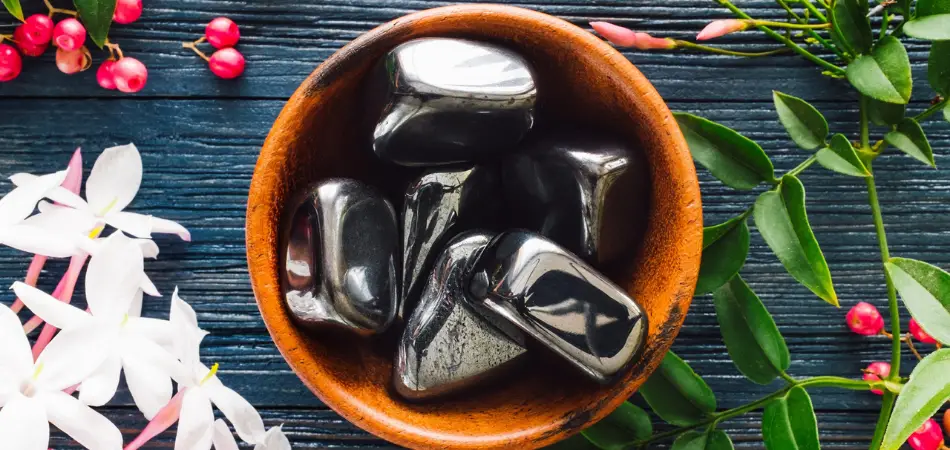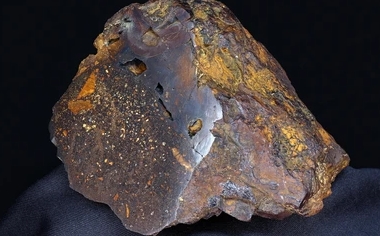Many people go for hematite due to its characteristic durability and color. But like iron, does hematite rust? Being formed in the same ore as iron and seldom called iron rust, hematite is harder than iron and has all iron properties, including color. Still, there is worry about whether it tarnishes and rusts as iron does.
No, Hematite does not rust. However, it is important to note that natural hematite is a chemical compound made up of iron oxides (Fe2O3). So, when exposed to oxygen, the natural hematite’s surface develops a shiny red-brown crust called rust.
Hematite is not malleable or ductile and will shatter in repeated blows. This makes it impossible to shape the mineral. While there are many different hematite colors (caused by impurities), the most common is silver gray. A black variety of hematite is known as ‘magnetite’ because of its magnetic properties.
Furthermore, this article will give you an understanding of what hematite is and answer the question, does hematite rust? You will also get to know how to protect your hematite jewelry if they do rust, that is.
Contents
What is Hematite?
Hematite is iron oxide that occurs naturally in rocks and soils. Its color varies from black to grey, silver, reddish-brown or brown; although you will most likely find reddish-brown streaks on other colors. It is more brittle and harder than pure iron; however, it is not as magnetic.

Hematite is considered a rare mineral, even though it is gotten from the same ore as iron, and is widely sought by jewelers all over the world. it is commonly used as a gem for mourning in ancient times. However, these days, they are fashionable and linked to classy fashion than what it was formerly used for.
Real hematite used for jewelry is durable but the compressed hematite clay used to make some imitation pieces of jewelry get brittle and flakes off after some time.
Does Hematite Rust?
Hematite does not rust. The confusion as to if hematite rusts are due to the chemical formula it shares with iron rust, Fe2O3. Although hematite and iron are from the same ore, and they have similar physical properties, they do not share the same chemical properties, at least with respect to rust. Iron and steel readily rust, other metals corrode; however, hematite does not rust despite being similar to iron.

Rust occurs when iron reacts with atmospheric oxygen and water to form iron oxide, which physically presents as reddish-brown flakes on a metal’s surface. Since ferrous metals rust and non-ferrous metals corrode, one may easily think hematite, is a ferrous metal, rusts too, but it doesn’t.
The appearance of reddish-brown coloration that you see on hematite beads and jewelry is the normal physical appearance of hematite. It does not mean your jewelry is rusting or losing its physical uniqueness. But then, if hematite is so similar to iron, how come it doesn’t rust, despite the appearance of rust marks on its surface?
Why is Hematite Rust-proof?
Hematite is resistant to rust because of its chemical make-up. Iron is represented with the chemical formula, Fe2, and oxidization of atoms of iron, it forms an iron oxide on the surface of the ferrous metal. You will notice that the metal beneath the rust deposit is usually protected from further rust. This is because all the free iron atoms on the surface of the metal have bonded with oxygen to form rust, Fe2O3. That means rust protects the metal from further rust, at least for some time. It only lasts for some time because there are still iron atoms in the metal that can react with oxygen. This holds true for ferrous metals because they have free iron atoms.

However, hematite is an iron oxide on its own, and in its entirety. It has no free iron atom that will react with atmospheric oxygen and water to form iron oxide, hence, its rust-proof nature. The red or reddish-brown streak on the jewelry is the physical representation of the iron oxide, as you normally see on rust iron.
Jewelry made with clay hematite does not rust either, despite being of inferior quality compared to pure hematite. However, it will become brittle with time, and flake. You can prolong its life by keeping it away from dry air and allowing it to get moist air from time to time. However, it can only last for so long.
Does Hematite Tarnish?
Hematite jewelry does not remain shiny for as long as it exists. It is common with many gemstones and crystal rocks, their shiny appearance can dull over time, but that doesn’t mean they have become useless. You can recover that shiny characteristic by polishing.

Hematite tarnishes, but not with rust, nor with corrosion. The shiny black or grey surface of your hematite bead may become dull with time, due to the disintegration of the surface structure of the stone. Being a product of weathering and pressure, you can restore its shininess by polishing it. The tarnish on hematite has nothing to do with rust, but with surface dullness.
How to Remove Tarnish from Hematite Jewelry?
Tarnish on hematite has nothing to do with rust but dullness. To restore the shiny brilliance of your hematite jewelry – rings or beads – clean them as you will other gemstones. Use only warm water and gentle soap. Avoid bleaches and harsh chemicals, and use only soft clothing or old toothbrush. Allow the stone to air-dry after cleaning.
Final Thought
Hematite is a mineral that is gotten from the same iron ore as pure iron. It is red in its powdery form and usually, black or slivery when polished to make jewelry. It is not magnetic and it does not rust or tarnish. However, its shiny brilliance can get dull but you can restore that.
Hematite does not rust because it has no free iron atoms to react with atmospheric oxygen and water, hence, iron oxide (hematite) cannot rust to form (iron oxide).

